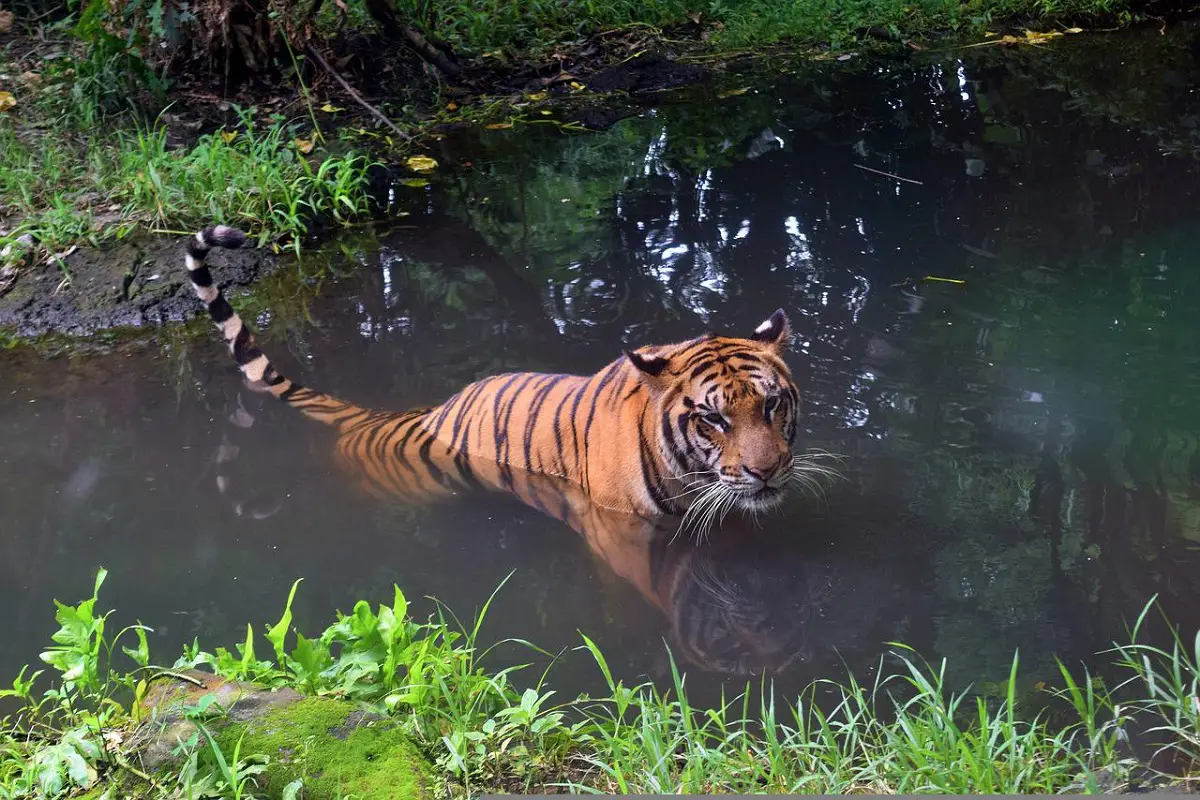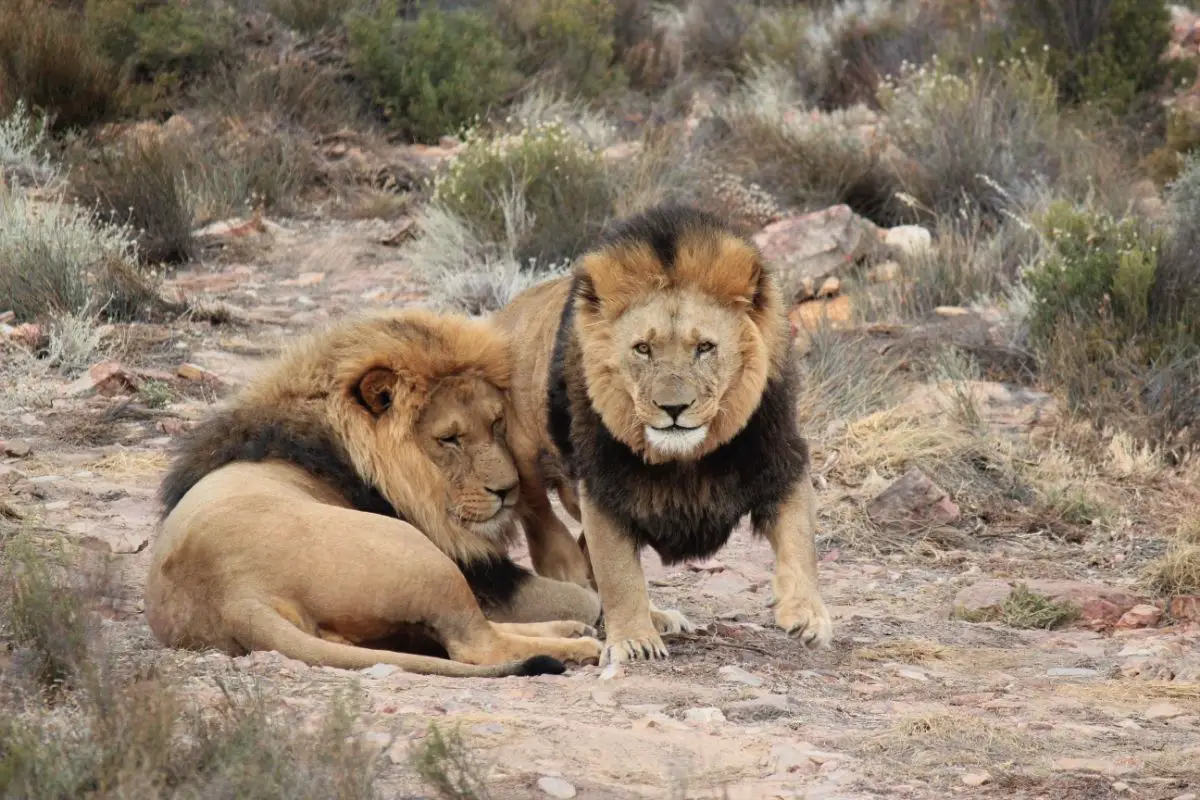Tigers are magnificent creatures, but did you know that there were once tigers in Bali? These Indonesian tigers were pretty famous, and made up one of the three species of tigers found in Indonesia: Sumatran, Bali and Java tigers.
In fact, the Java and Bali tigers were once so close that it is possible that they became separated due to the oceans splitting the islands apart during the ice age. However, there is also a chance that they swam across the short distance to see each other.

If you are wondering whether any Bali tigers exist, or what they looked like, then you have come to the right place. Let’s take a look at Bali tigers in more detail.
Are There Tigers In Bali?
Whilst tigers used to roam the land in Bali, this isn’t the case any more. In fact, Bali is such a small island that there isn’t a habitat big enough for them anymore.
There used to be three different subspecies of tigers in Indonesia. These were the Sumatran tiger, Bali tiger and Javan tiger.
Whilst both Bali and Java have sadly become extinct, the Sumatran still exists in Indonesia. Having said that, they do not live in Bali, and instead, the Sunda Islands. In fact, there is said to be up to around 500 of them still living in the wild.
It might seem like a lot, but 500 tigers from a particular species is actually quite small if you are hoping for them not to go extinct, so they are on the endangered list. This means there is a possibility that someday they may become extinct.
In fact, it is labeled as ‘critically endangered’. Their population has been decreasing because of a couple of factors: deforestation and poaching.
Whilst the amount of tigers is low, unfortunately, there can’t be that many tigers to start with. Indonesia is such a small island that there cannot be large populations of tigers anyway.
All of these things are contributing to them not existing any more, so Indonesia has laws set that are protecting the Sumatran tigers. If a person is caught poaching they could either have a large fine, or end up in jail.
And just whilst we are on the topic of Sumatran tigers, they are the smallest known tiger living currently. The reason being that they evolved to adapt to their small surroundings. Indonesia is a small country!
Unsurprisingly, the Bali tiger was even smaller! This helped them adapt to being in a much smaller habitat, but perhaps this was a reason as to why they were the first tigers to become extinct in this area of the world?
The smaller you are, the easier you are to hunt?
How Many Bali Tigers Are Left In The World?
Unfortunately, Bali tigers are completely extinct. Having only been found in the island of Bali in Indonesia, none are now known to exist.
Whilst some tigers are only extinct in the wild, the same cannot be said for the Bali tiger. This is because, whilst they are known to have existed, there are no records of them apart from bones, skins and skulls which have been preserved by museums.
They were never caught on camera, put into captivity or displayed in a faraway zoo. This meant that once they died off, that was it.
Back in the year 1937, a female Bali tiger was killed on 27th September. At the time, this was the last known surviving Bali tiger, though it is said that they likely existed for another ten or twenty years before becoming extinct – probably around the 1950s.
The tiger itself was seen as a huge threat, therefore it was the subject of hunting by humans, their number one predator. Whilst seen as a threat, they were also hunted for sport.
The Dutch arrived at the island during Colonial times and created a lot of damage for the Bali tigers due to their methods of hunting. At the same time, the natives of the small island were also hunting the tigers.
Whilst hunting plays a big part of why the Balitigers became extinct, there are a few reasons.
Hunting was rife due to the tigers being seen as a threat, but also the island is small, meaning collectively, there weren’t that many tigers compared to the amount you would find in a place like Africa, for example.
Humans were increasing their own habitation, making the tigers’ habitat even smaller. They needed food themselves, and their places for prey were becoming very limited.
Also, before humans even arrived on this island, the Bali tiger population was already small.
All of these reasons contributed to the final extinction of the Bali tiger.
How Big Was The Bali Tiger?

As we stated previously, the Bali tiger was smaller than the average sized tiger. This meant that they were actually similar to the size of a leopard or cougar.
A male was around 7 feet length-wise, and could weigh up to about 200 pounds. The females however, weighed about 150 pounds and if you included their tail, measured under 7 feet.
Comparing this to an African male tiger which can reach up to 10 feet in length, they were seen as quite small. This is because over time they evolved to adapt to their environment. Indonesia is a small island, so they needed to be small to fit their habitat.
Africa has large open areas that are perfect for bigger tigers to roam and hunt their prey. They do not need to evolve when it comes to their size.
What Did The Bali Tiger Look Like?
Whilst there aren’t any known picture records of the Bali tiger, their fur can be seen in museums. This is because people who hunt also stripped them of their skin.
The interesting thing about the Bali tiger was how dark their orange fur was. In contrast, their underbelly was very white – even more so compared to their dark fur.
They actually didn’t have that many stripes, but they did have a bar-type pattern upon their head which made them distinguishable compared to other tigers.
Also, they seemed to appear as if they were more graceful and less scary than other tigers due to their appearance.
What Did The Bali Tiger Eat?
The Bali tiger had a few things available on the menu. Whilst they had a whole plethora of choices, here are a few of the prey that they hunted: monkeys, Indian muntjac, wild boar, red junglefowl, rusa deer, banteng (who are also extinct), and monitor lizards.
Because the Bali tigers had limited movement due to living in forested areas of the island, they couldn’t hunt like tigers who are more used to open areas.
However, maybe this helped them to catch their prey, as they could use trees and other natural resources to help them hunt.
As stated above, the only ‘animal’ that saw tigers as prey were humans. So they were relatively safe from being eaten or hunted by other living things.
However, they also were not safe as humans would hunt them to purposely get rid of them, rather than for a resource to eat for energy.
Final Thoughts On Bali Tigers
Big cats in the wild are becoming extinct, and the Bali tiger is no exception. This means that there are no Bali tigers in the wild or captivity – they were never caught to be shown in a zoo, or peraded on motion pictures.
Unfortunately, they were doomed from the start. Whilst they settled in Bali, the island of Indonesia is a pretty small place to live. This meant that their habitat was limited, and their population small.
As soon as the humans came to live there, they saw the Bali tiger as a threat. Not only did they seek the Bali tiger out to hunt and kill for safety reasons, but they also did it for sport. Not only were they being killed, their habitat was decreasing.
Deforestation caused the Bali tiger to lose parts of their habitat. The more the humans needed to build their own areas to survive, the tigers were decreasing due to losing out on habitat space and prey.
Sadly, by 1937, the last known female Bali tiger was killed. It is said that the Bali tiger perhaps lived for another ten to twenty years before being wiped out completely.
Unfortunately, the Bali tiger does not exist anymore. Whilst Indonesia is still a home for Sumatran tigers, these too are in critical danger of becoming extinct. Due to this very reason, thankfully they are protected by Indonesian law.
We hope you enjoyed this article and have learned a lot about the Bali tiger. If you enjoyed it, please check out the rest of our website for more information on wild animals.
- Sink Your Teeth Into This: Analyzing the Powerful Lion Bite Force - September 8, 2023
- Siberian Tigers: Everything You Need To Know - September 4, 2023
- Do Lions Eat Humans? Understanding Lion Aggression and Risks - September 4, 2023









